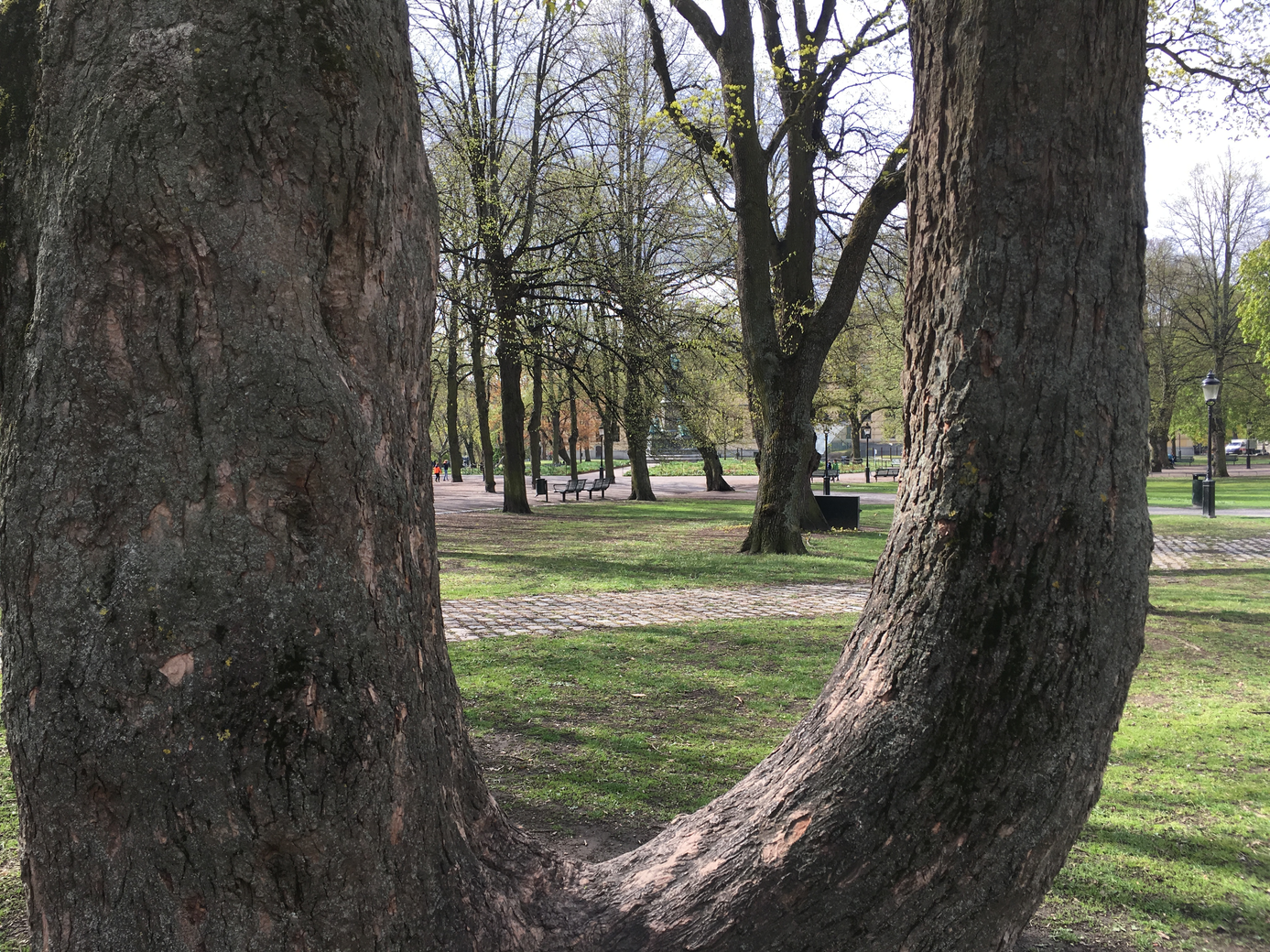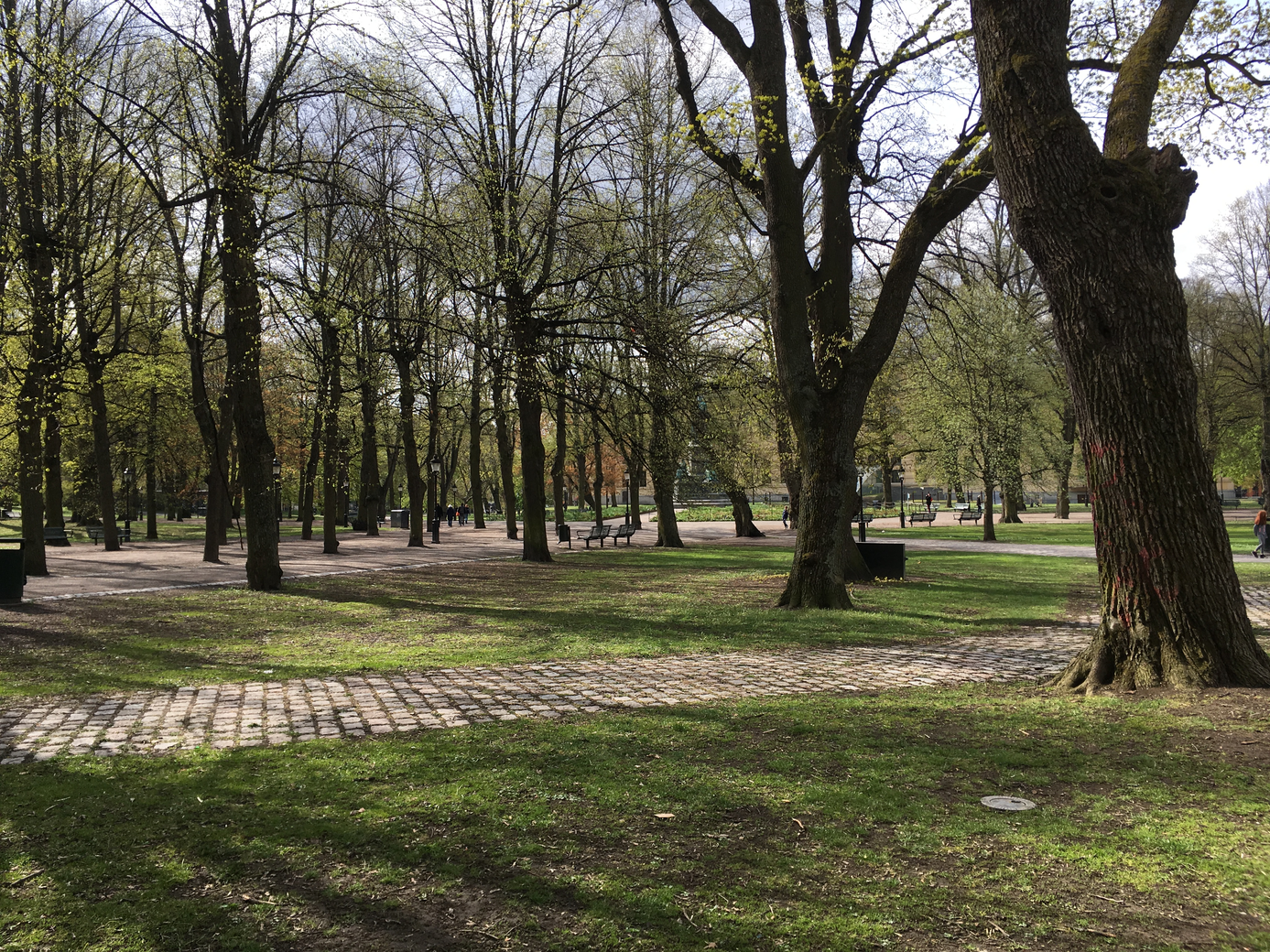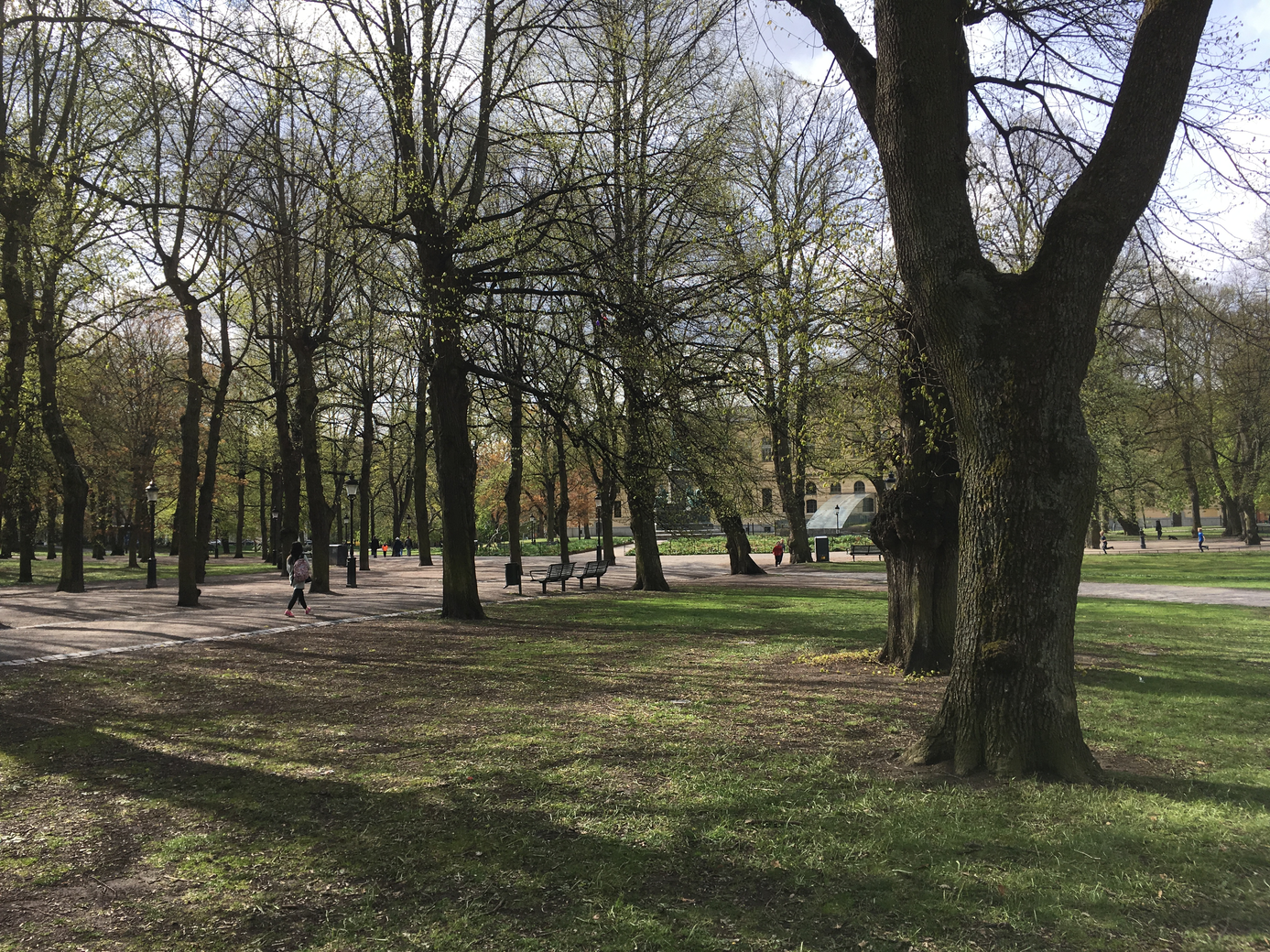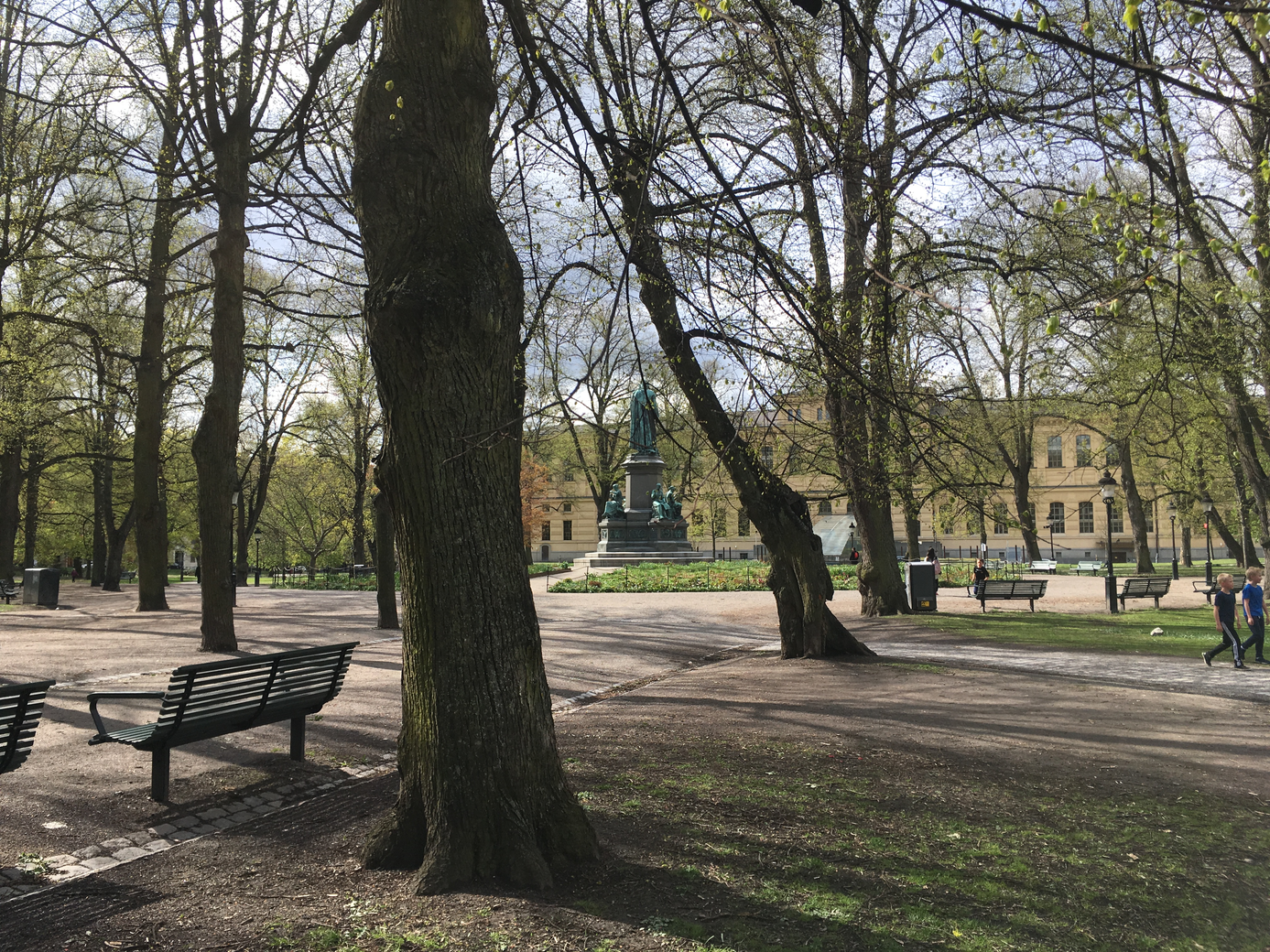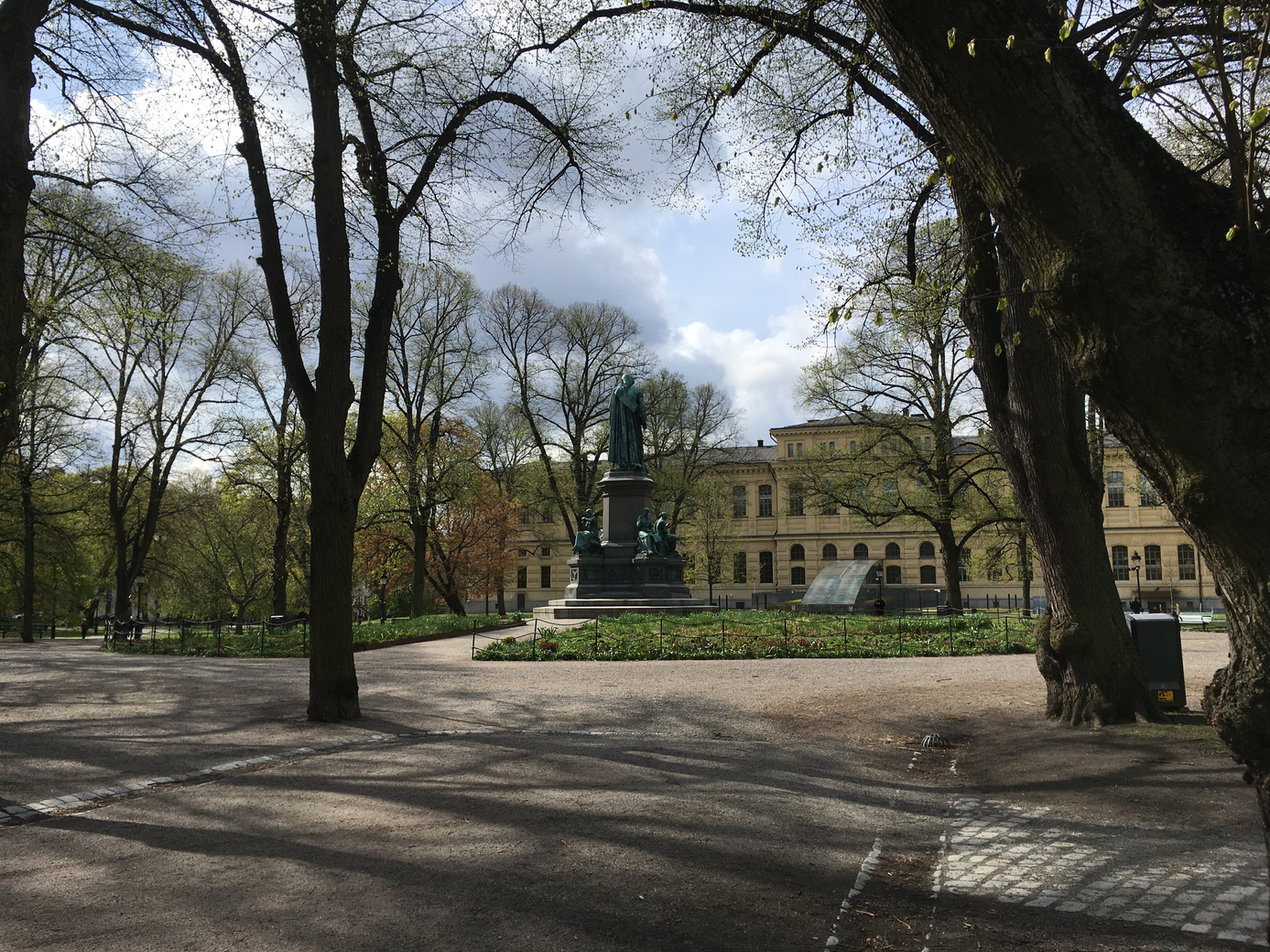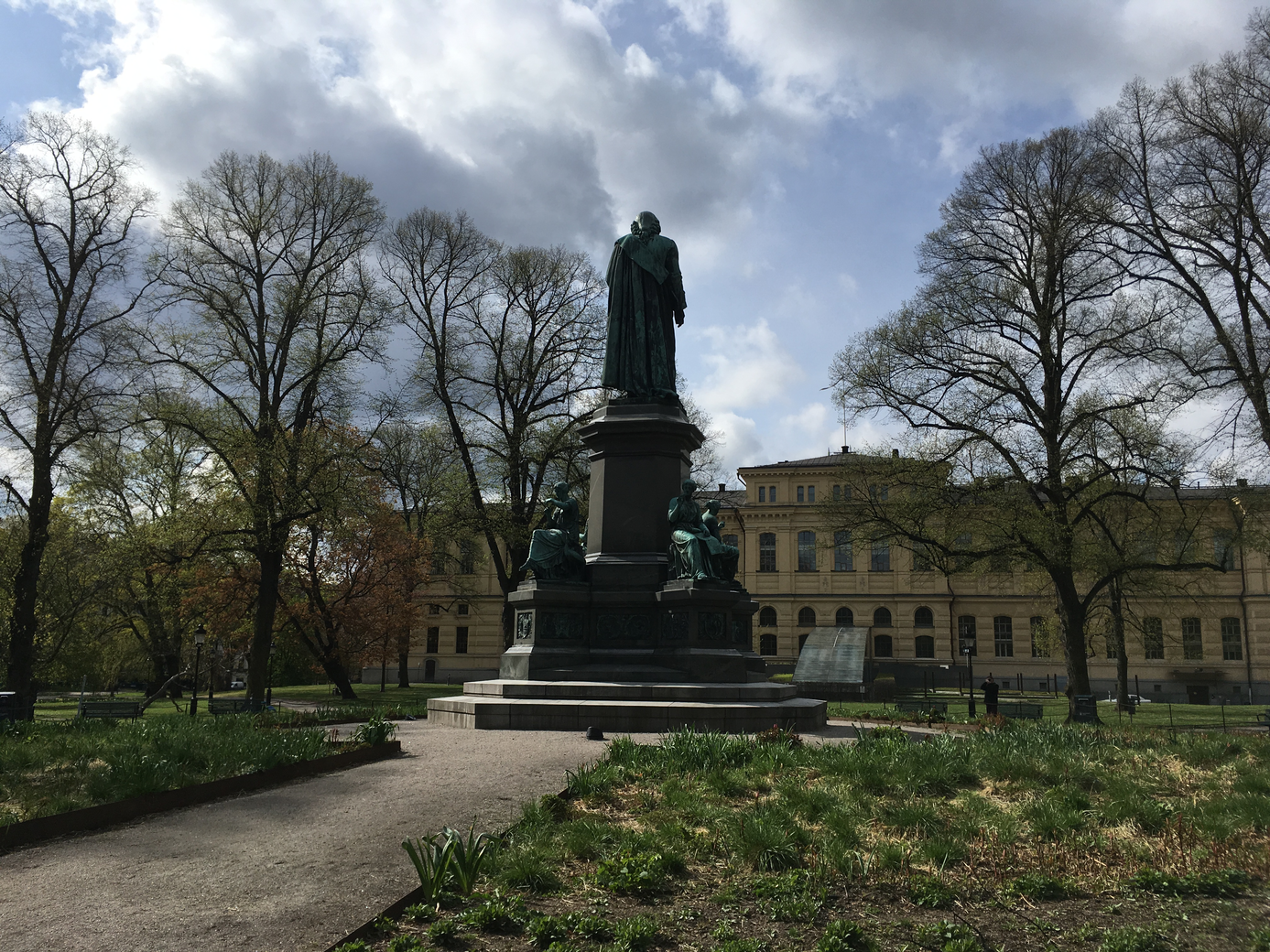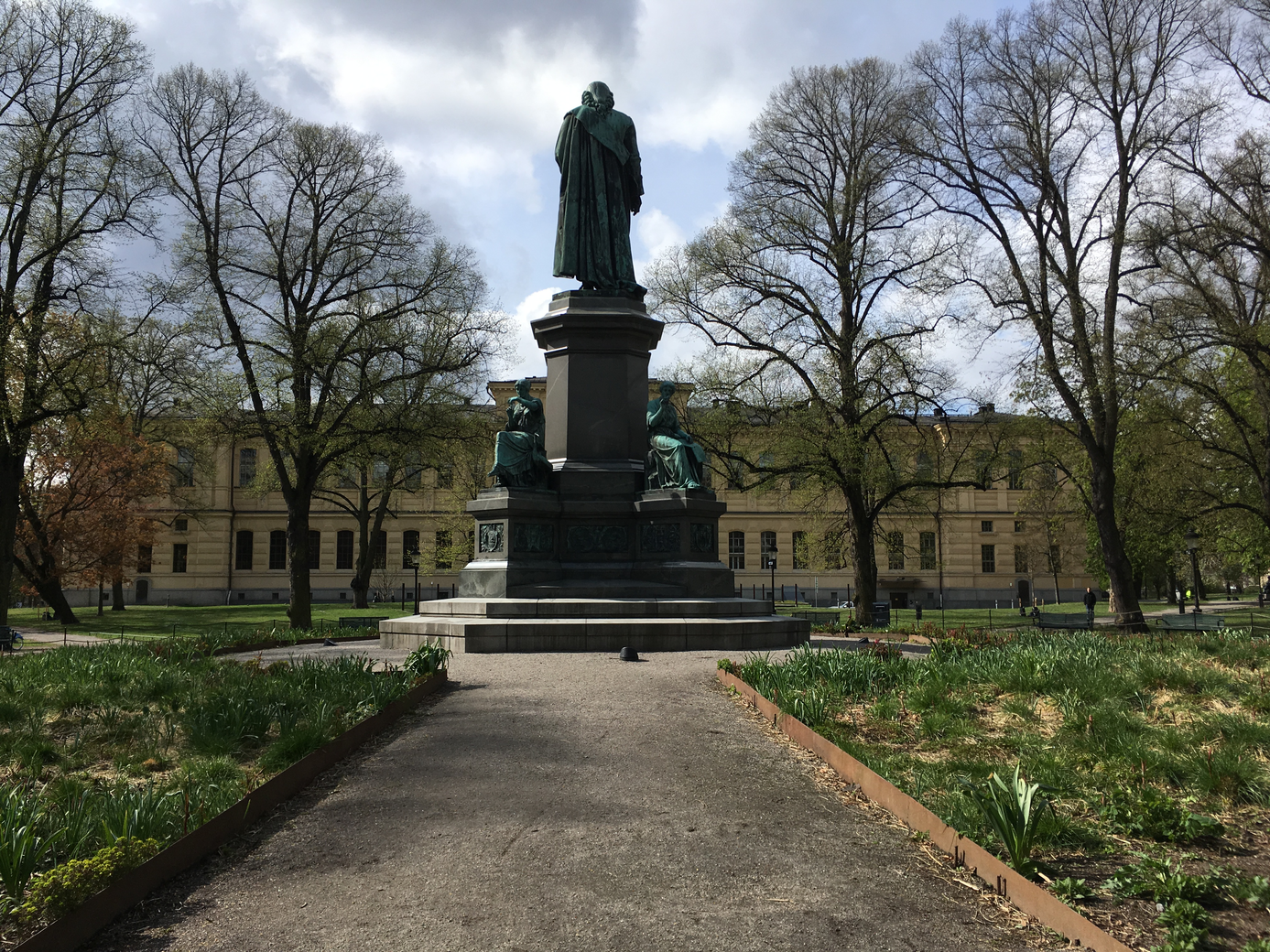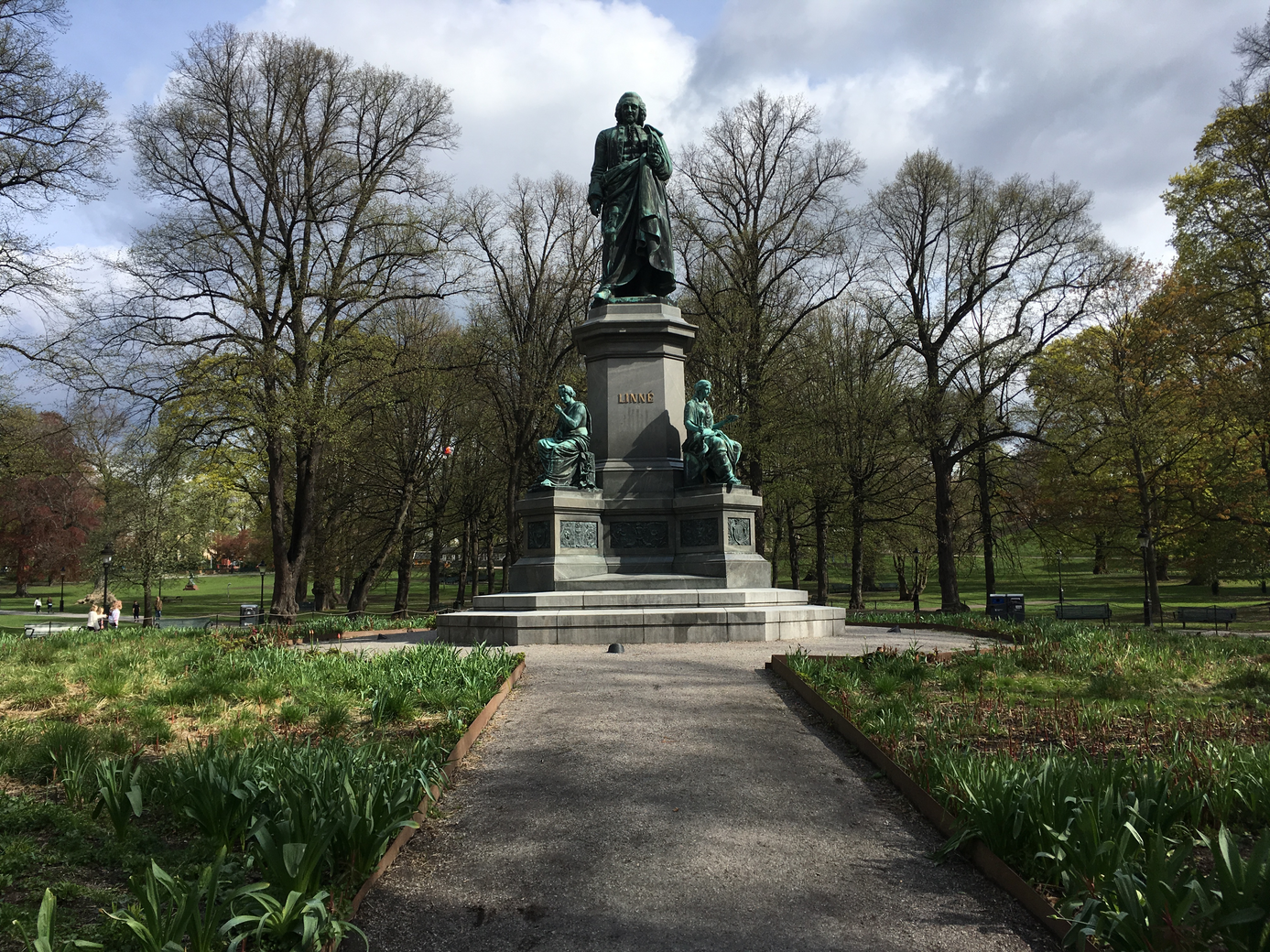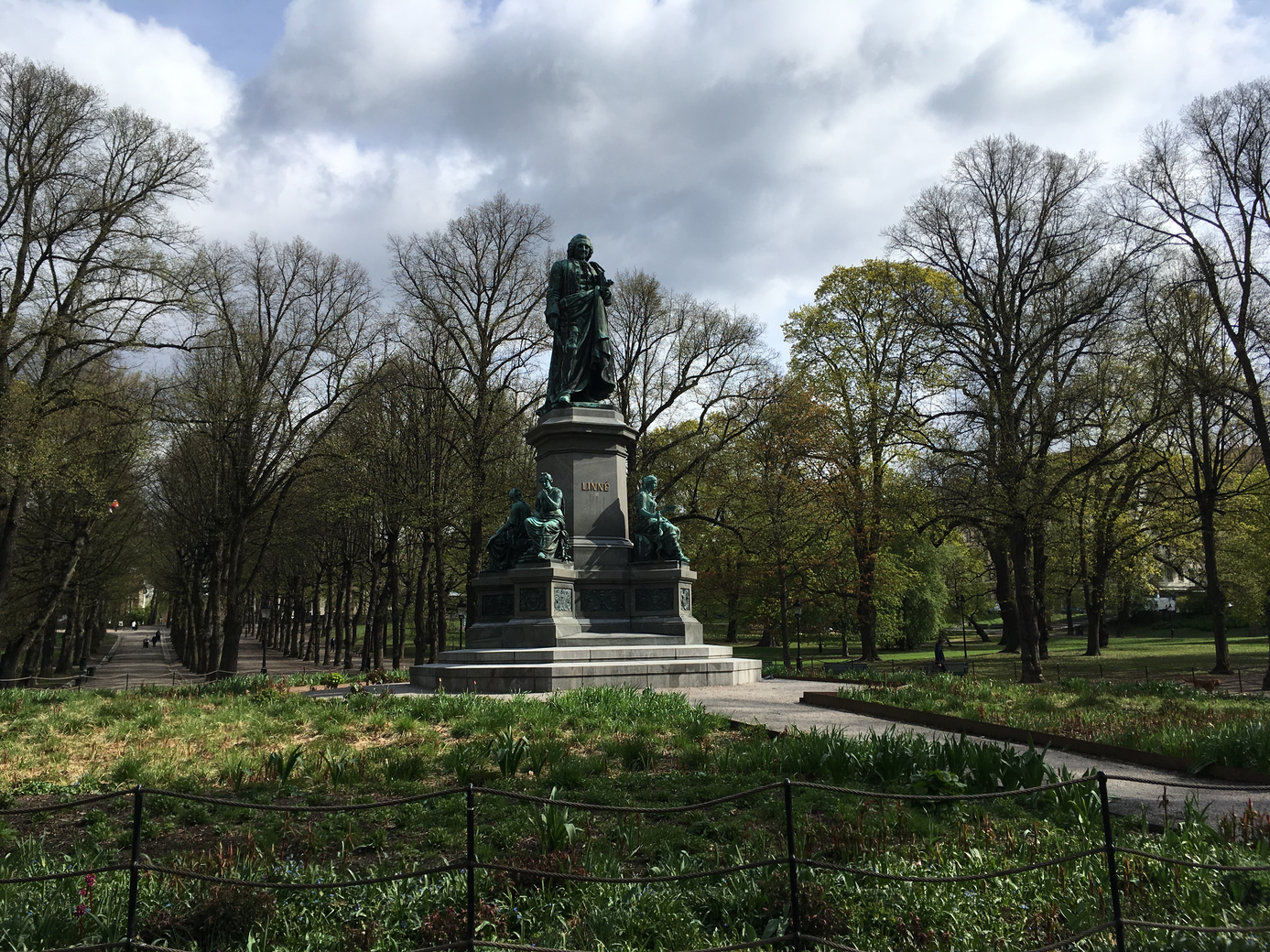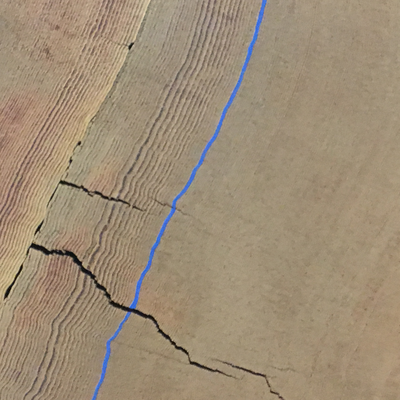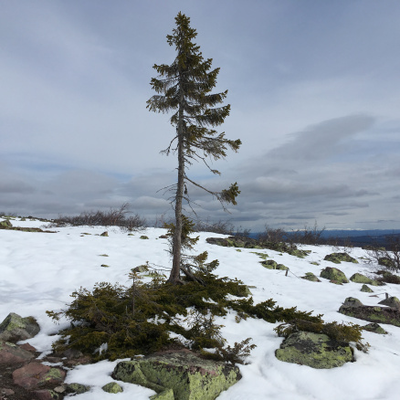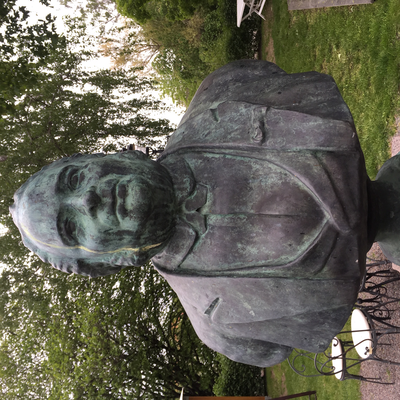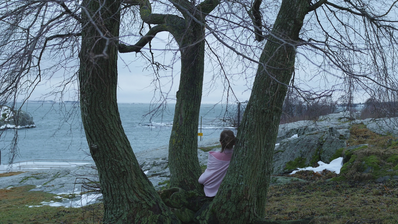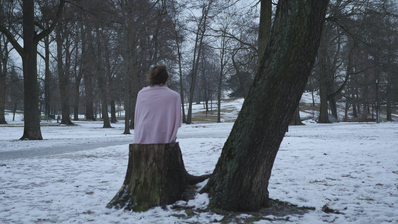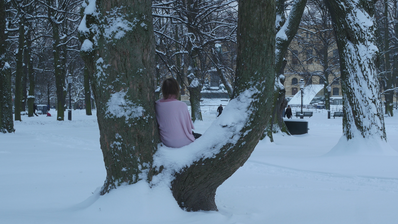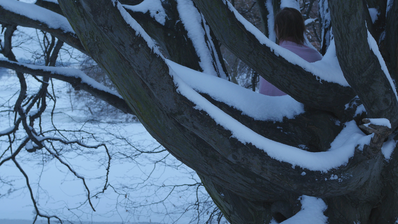When we think of ecology in everyday parlance the division into human and environment is still prevalent, although such a dichotomy is rather misleading. Add to that the question who are ’we’? Who is included in history and who is environment? Who belong to the contemporary living ones that create and re-experience the past? Who do we live together with in our cities? Are the trees around us part of ’us’, of our stories? Or are they our ’environment’? Actually, we are all part of the same life or zoe, as Rosi Braidotti (2017) and others claim.
Gregory Bateson’s well-known slogan states: “What thinks is the total system which engages in trial and error… The unit of survival is organism plus environment” (Bateson 2000, 491). Felix Guattari went a step further and noted how organisms not only adapt to their environment but also rework and transform it (Guattari 2000, 54). Understanding organisms and environments as given has also been criticized by theorists like Karen Barad, who wonders, referencing studies of colonies of slime mold, “how can we expect the notion of an organism, understood as an individual that is situated in a container we call the environment to begin to begin to speak to the complexity of the intra-active reconfiguring of bodily boundaries that defines the slime mold’s astonishing material existence?” (Barad 2012 b, 77).
Barad coined the term intra-action to replace the usual term inter-action, which presumes that the interacting parts pre-exist the inter-action. Intra-action “signifies the mutual constitution of entangled agencies” and, unlike the ordinary term interaction, “recognizes that distinct agencies … emerge through, their intra-action” (Barad 2007, 33). According Barad “agencies are only distinct in relation to their mutual entanglement; they don’t exist as individual elements.” (Ibid, italics in original). For Barad phenomena (rather than independent objects) are the basic units of existence and phenomena are produced through intra-actions. Barad explains: “it is through specific agential intra-actions that the boundaries and properties of the ‘components’ of phenomena become determinate and the particular material articulations in the world become meaningful” (Barad 2007, 333). Different intra-actions produce different phenomena, she notes (Barad 2007, 58). “Different material intra-actions produce different materializations of the world” (Barad 2007, 380).
In contemporary biology one speaks of symbiosis and symbiogenesis; there is no clear dividing line between organisms and environment. Feminist and environmental scholar Stacy Alaimo has introduced the notion “trans-corporeality”, where “the human is always intermeshed with the more-than-human world” in order to emphasize how “the substance of the human is ultimately inseparable from ‘the environment’” (Alaimo 2010, 2), with environment in quotation marks. By stressing movement, ‘trans’, between and through bodies, she foregrounds “the often unpredictable or unwanted actions of human bodies, nonhuman creatures, ecological systems, chemical agents, and other actors”. In contemporary reality ’human’ and ’environment’ can by no means be considered as separate. (Ibid).We are even more entangled and intertwined than Bateson imagined.
When trying to ground ecological ideas in practice the “ecology of practices” developed by Isabelle Stengers (2005) provides a relevant starting point. (For a more detailed discussion of Stengers' ideas related to research in the arts, see Arlander & Elo 2017). Stengers emphasizes the value of the diversity of research designs and the specific practices related to them and sees them as a counterforce to the homogenizing power of the knowledge economy. In all research one should, according her, question the too self-evident connections between truth, generalisability and ethics, because they mainly serve to legitimize the capitalist logic of the knowledge economy. One should rather take as a starting point the notion of responsibility from Leibniz, which means commitment to the specific. For the artist-researcher this would mean a move from scenarios of generalization, product development and application towards the subtle working on and describing of specificities, which I will attempt in the following.
A dimension of the environment that we definitively have begun to rethink, as part of the so called posthuman turn, is our relationship to plants. Not only the realization of the importance of forests as carbon sinks, the role of trees in ameliorating air quality in cities, or other utility aspects in relation to humans, but also research concerning the learning capacity and memory of plants have contributed to an increased interest in critical plant studies (i.e. Marder 2013, Gibson 2018). The philosophical conversation concerning the vegetative aspects of the biosphere has been reopened after a century of aphasia, according the introduction of an issue of the literary journal Aiolos, devoted to the plant soul (Van Ooijen, 2018). In the following I will recount one way of trying to rethink the relationship to trees, in practice. And thus, also to rethink what ecology, and history might mean from the perspective of trees, or more precisely, whether we could include the possibility of such a perspective in our narratives.
Burt how to begin such a narrative? One successful example of trying to include the “fates and adventures” of trees, their history with that of the history of humans, is the award-winning novel by Richard Powers, The Overstory (2018). Another way could be to invoke dendrochronology, the study of the growth rings of trees and how one can read changes in the climate across millennia by studying them. But I am not dealing with such issues, I work with living trees that are much younger, even though I have an image of a slice of a truly ancient one with growth rings as the desktop image on my computer (the same image serves as the title page to this exposition). The image shows the cross-section of a tree trunk at the entry to the Natural History museum in Stockholm.1 Somebody has painted a thin blue line to mark the year 0, the beginning of our calendar. Then the tree was already 460 years old and thus managed to live up to an age of 2400 years.
Recently I had the possibility to visit an even older tree, Old Tjikko, a spruce that grows on the Fulufjället in Dalarna in Sweden. It is a clone, that is, the roots are old, not the relatively thin trunk that rises from the juniper-like shrub of branches growing along the ground. With carbon dating, however, the age of the little spruce tree has been estimated to 9950 year. Yes, nine thousand nine hundred fifty years! Thus, the spruce has settled there on the fell right after the ice age and still lives there. It is (one of) the oldest trees in the world.2 Another candidate for that title is a Bristlecone pine called Methuselah, which is estimated to be 4800 years old and lives high up in the mountains of California, where neither pest nor fungal diseases can reach it.3
Why begin the story with the elderly? It is like beginning a historical account with Adam or the Big Bang. My project deals with a completely different temporal perspective and the trees I have visited behind the back of the statue of Linnaeus in Humlegården park and the small statue of C. Juddman (whom nobody seems to know anything about) on Djurgården are not very old. Perhaps they are of my age? Probably older, more than a hundred years…. A few years ago, I participated in a seminar in Gothenburg on the topic of examining and revitalising the work done by the group “Stadens Dansare” (the city dancers) or the dance theatre group Rubicon did there in the 1980s. As my contribution I would have liked to sit in some of the trees that the group had spent time in or danced with. The text “What do the trees Remember” is all that came out of that for my part. How to interview the trees? (Arlander 2014 a, 89).
Through my way of working I am creating an archive of sorts, or “souvenirs”, as I have called my documentations (Arlander 2014 b, 29) "preserving" fragments of the now for future sues, creating material for the memory, for the future. The twelve-year project Performing landscape on Harakka Island outside Helsinki, the final stages of which I have described in the text “Repeat, Revisit, Recreate – Two times Year of the Horse” (Arlander 2016) is an example of a relationship to the past, a kind of reconstruction, actually. I have made a few revisits to the old shooting locations of the Animal Years (2003-2014) within the research project How to do things with performance. That however, is not my interest in the project that I will here describe, but rather the hidden and forgotten archive that the trees comprise.
In the three-year project “Performing with Plants – Att uppträda/samarbeta med växter”xthe trees are in focus, not the landscape or environment in general, although I largely utilize the same technique. That is, I perform or pose for a video camera on tripod repeatedly on the same spot and with the same framing in order to make rough time-lapse videos, which document changes in the environment with the shifting seasons and weather. Thus, it is not so much the distant past that is made present in the now through them, but rather the immediate past. And it is not the dramatic historical occurrences, crises, disasters and injustices that are in that way documented and archived, but rather the small transformations, the insignificant dislocations, the barely noticeable changes.
One could perhaps compare the technique with an oral history project, except that it is not oral at all, and concerns only the immediate surroundings, what the camera sees. And it could of course be compared with serious visual landscape documentation that photographer Tapio Heikkilä has developed as part of his doctoral project at Aalto University in Helsinki (2007). Or with autoethnographic projects, if you wish. But I would not wish that, actually. As an artist I do not primarily want to connect my work with the autobiographical. Even though I am almost always in the images as a human figure, a more or less anonymous character, the work is not about me, but rather about the surroundings, the environment, and in this project about the trees – and mostly also about time, evidently. Naturally the work becomes a kind of diary, too, as a side effect, albeit not a personal one, but rather a diary of the place, or perhaps a diary of the tree in this case, even though only a very small part of each tree is visible in the images.
The main concern of the project is the question how to collaborate or perform with trees. In the project plan (in the so-called popular description) the aim is formulated as a further development of performing landscape by approaching individual elements in the landscape, such as specific trees.
The project “performing with plants” aims to investigate whether collaborations with trees and other plants could be a way of entering into dialogue with our surroundings in concordance with a post-humanist and (new)materialist view of the environment. /--/
By focusing on individual parts of the landscape, especially plants – which we chemically have a symbiotic relationship with, while they produce the oxygen we consume and we produce the carbon dioxide they need – more sensitive and ecologically sustainable modes of performing landscape can hopefully be developed. And these methods, art works and events can possibly serve as inspiration and provocation and lead to a somewhat different understanding and experience of our surrounding world.4
A plan is a plan and realizing it is something else. The two examples included here were a kind of pre-studies in Stockholm, during the year 2017,5 while I was still based in Helsinki, a sort of complement to the two trees I visited there.6 In what way are these videos made in Stockholmby visiting two trees a few times a month relevant for the question of the ecology of practices, or of ecological practices for that matter?
The most obvious connection that crossed my mind was the statue of Carl von Linné or Linnaeus in the middle of Humlegården Park. It is almost distinguishable between the trees in the larger of the images where I sit in or on the sycamore, literally behind the back of Linnaeus. The taxonomy of Linnaeus has been completely decisive for our way of regarding plants, and he is even considered one of the founders of modern ecology.7 Ecology and history, however, are also present in the trees themselves. Most park trees are much older than the humans who mingle among them and enjoy the oxygen rich and cool air they produce.
At this point it might be a good idea to look at the videos With a Beech in Djurgården (44 min 10 sec.) and With a Sycamore in Humlegården 1 & 2 (44 min 10 sec.). They are made to be shown as installations, where the viewer should be able to come and go as they please and to see only part of the works. The same strategy could well be applied when watching them here. Those who are interested in the working process could browse through the blog notes in the appendix.
The Examples
Like all works, these video works emerged from a context, a kind of ecology. In this case it was not so much a shared artistic context with others who have worked with plants or trees – something I have come to explore later – but rather a continuation of my previous work on Harakka Island, and a parallel work in Helsinki, where I visited two trees (a group of elm trees and an alder) in Kaivopuisto park, often several times a week.8 There, too, I video recorded one of them, the group of elms, from two distances, which in that case was better motivated. The foliage changed the character of the images much more than in the two images in Humlegården, where only a small part of the divided tree trunk is visible in the images with the sycamore. The problem of framing and distance – how to create a more balanced relationship between the human figure and the tree, in order for the human figure not to totally dominate, like here, nor to completely disappear – I was pondering later the same year while performing with pines in Nida on the Curonian Spit (Arlander 2019)9 but by then it was too late to change the images with the sycamore and the beech in Stockholm.10 In order to create a time-lapse one has to repeat the same image. It is part of the limitations of this mode of working that you have to live with the first decisions the whole year.
The final edited video works With a Sycamore in Humlegården 1 & 2 (44 min 10 sec.) and With a Beech in Djurgården (44 min 10 sec.) have another focus than this exposition. They are planned to be shown as installations together or separately, and to function as some kind of reminders of the passing of time and the limited human perspective. They are deliberately ambivalent and ambiguous in order to enable also other interpretations besides those that follow the intentions of the artist or the aims of the research project. By being “brutally documentary” in character, however, created by the automatic functions of the camera, fairly unprocessed and resolutely refusing to follow the conventions of filmic narration or video aesthetics, they can also appear challenging.
While they are planned to be shown nonstop as installations, where the viewer must be able to come in and go out anytime and still get an idea of what the work is about, it is not necessary to see them from the beginning to the end like ordinary films or videos. For somebody that might feel similar to the "slow-TV” phenomenon, where the hypnotic quality emerges exactly because nothing really happens. At the same time, they declare in themselves their “workstory” (Bärtås 2010, 45-46), how they are made. One needs no further knowledge of video technology than what an owner of a s smartphone might be supposed to possess in order to understand that the video is based on repeated recordings in the same place which have been combined, because it is only the entrance and exit of the human figure into and out of the image that has been cut. Despite the fact that the videos are deliberately “rough” and in a way minimalistic works they do, however, form a kind of data archive, a series of images that depict a particular data selection of the circumstances in a particular place during a year, and as such it could be used for many different purposes.
This exposition, on the contrary, and partly also the ongoing project archive on the Research Catalogue11 has a somewhat different function. Here it is no longer the anonymous human figure and the anonymous tree that appear together in the image space, but rather the artist as a person appears with her blog posts and ponderings. If the video works carefully avoid the personal, even though they can be called intimate in some sense, the texts in the archive and in this exposition are clearly personal and even anecdotal, without any claims to universality or even an academic “we”. And the interesting question naturally arises, whether such personal ponderings add something essential from a research perspective. Or, are the images after all carriers of the most important information and the possibly relevant insights.
When writing this I have not yet shown the work with the sycamore anywhere. The video with the beech was shown as a background to a speech in London in April 2019, and two preliminary studies with the beech made in autumn 2016 (Sitting in a Beech – Snow and Sitting in a Beech - Rain) were included in an installation shown during CARPA 5 in Helsinki 31.8.-2.9.2017 and later in the published proceedings (Arlander 2018). Personally, I like the work with the beech better, the dramatic snakelike branches and the water nearby as well as my position partly hidden inside the tree. The images with the sycamore, however, are almost a classic example how the human perspective and the habit of following the proportions of the human body dominate our (my) image conventions and prevents the sycamore from appearing. To stick to the regular 16:9 format makes it completely impossible for a tree – if one does not turn it around 90 degrees, like a photographer would do – but doing that creates practical problems when showing the video (which I have some experiences of in other contexts with vertical landscapes). A spectacular way of pointing at the problem is provided by Eija-Liisa Ahtila in her portrait of a spruce, Horizontal (2011).
There were, however, other reasons besides habit and convention for this framing, for instance a vague idea to invite other people to sit in the ”armchair” the sycamore provides, to document them sitting in the sycamore, perhaps from the front, as a parallel video to the figure seen from behind, ”keeping time”. That project was never realized, probably because I was not really that interested in exploring participatory strategies with people, but wanted rather to find more sensible forms for performing with trees. With a Sycamore in Humlegården 1& 2 turned into a work about a human figure. It depicts a human figure sitting in a tree crutch and not at all the tree itself, quite contrary to the original idea. And that is of course not uncommon; things turn out differently than one thought. The "uncommon" here is perhaps that I did not hide away the material and accept the failure, but rather insisted and edited it, and will also be showing it as an installation on suitable occasions. But, I also want to reflect upon it and tell about it. That is one of the points of artistic research that one can (and should) account for those parts of a project, too, that were not so very successful. Often, they are the ones that most clearly display the problem, as in this case. How can one perform with trees if one does not take as a starting point that they should appear and be seen to their advantage, rather than serving as an “armchair” for the human figure?
And now? Now I have this material, what can I do with it? Editing is an important phase where much can be done, if one wants, whereas I now have this edited and finished material, three videos with one-minute images of each scene in the order they were performed and recorded. What else can I do? Only to place the two videos with the sycamore next to each other offers two alternatives, two different movements, while we tend to read images, too, from left to right. Either from that which is close to a broader view, or from a broader view to a more intimate image. To begin with I thought the order would be from the broader to the nearer, from a medium shot to a close-up, in the order they were performed and as the names 1 and 2 indicate. When I look at them now, however, it is clearly more interesting to have the order 2 and 1, that is, to have the figure in close-up to look at the other one further away. I could of course combine them with the beech as well, or simply ignore the close-up with the sycamore and use only the first part where you can see a little bit more of the park. In that case I lose the intimacy of the close-up of the bark, that the skin of the tree still offers. And in the images where the head of the human figure does not fit within the frame the balance is better. Then both of us are mutilated and only partly shown, the sycamore and I…
The ecology of practices
One of the key ideas in Isabelle Stengers' notion ecology of practices is a diplomatic respect for differences. This idea leads her to to question the ideal of a general communicability and shareability. The tight union of truth and generalizability creates an illusion that true communication would be only to share the contents and repeat them faithfully. According Stengers, truth should be thought of in terms of relationships. The central task for each specific research practivce is then not some form of fight for legitimation but demonstrating the specific purposes that channel it. This would not lead to the much too common building and protecting of disciplinary boundaries and thinking in silos provided the connections between truth and generalizibility are dismantled and truth is understood as a relation (Stengers 2005, 183-196). Following Stengers I should try to demonstrate the specific purposes that my practice channelse, as I have done, so some extent, above.
Stengers describes her notion ecology of practices as a tool for thinking, the need of which she realized when working with physicists and noticing that they defended themselves towards objections by equating their practices with rational universality. But a tool will partly co-produce its user, Stengers points out, and in this case, it led her from physics to ponder the ritual practices of witches as social techniques. As a philosopher she acknowledges being part of a tradition, which from the very beginning excluded magic and created tools for speaking in the name of universality, and adds: “Maybe this is why I had to go back to this very beginning, since as a daughter, not a son [of philosophy] I could not belong without thinking in the presence of women, not weak or unfairly excluded women, but women whose power the philosophers may have been afraid of. “(Stengers 2005, 196). Magic is “a technique, a craft or an art”, which many would be tempted to reduce to a matter of mere psychology. But the name ‘magic’ reveals “something which both feminists and nonviolent activists have discovered—the need to create techniques which entail... ‘depsychologisation’”, she writes. “Rituals are modes of gathering, the achievement of which is that it is no longer I, as a subject, ... who thinks and feels.” (Stengers 2005, 194). Artistic practices can have a ritual function, too, as my practice inevitably has on some level.
And even more importantly, for this case, the ecology of practices can, according Stengers, be seen as an example of what Deleuze called thinking through the middle, par le milieu, using the two meanings of the French word milieu, both middle and surroundings. Thus, thinking through the middle could mean thinking “without grounding definitions or an ideal horizon”. Thinking with the surroundings could mean that “no theory gives you the power to disentangle something from its particular surroundings” or “to go beyond the particular towards something we would be able to recognise and grasp in spite of particular appearances” (Stengers 2005, 187). Stengers points out that “there is no identity of a practice independent of its environment”, although this “does not mean that the identity of a practice may be derived from its environment”, because thinking through the environment “does not give power to the environment” (Ibid). The centrality of the 'milieu' is almost self-evident in my examples that are totally dependent on their environment, especially my tree partners, for their existence.
Stengers brings up the ethical guideline of Leibniz, dic cur hic, to explain why one has chosen to say or do something on a specific occasion. One should not rely on “any general principle that would give… [one] the right to act” (Stengers 2005, 188). Instead one should take time to open one’s imagination and consider this particular occasion. According Stengers, I would not be responsible for the consequences as I am not responsible for the limits of my imagination, because my responsibility is played in a minor key, as a pragmatic ethos. I am responsible for paying attention, for being as discerning and discriminating as possible about this particular situation. In other words, I must “decide in this particular case and not to obey the power of some more general reason” (Stengers 2005, 188). Although Stengers here stresses subjective choices, she recommends neglecting general principles in a manner that can be linked to Barad’s thought of the specificity of each situation, where specific conceptual arrangements and agential cuts produce what matters in each case, and also the duty to articulate those cuts.
Stengers’ formulations and her manner of relying on Leibniz might lead one to assume that she thinks diverse practices exist as such and the ecology of practices could be formed of their interaction. Her thoughts can be understood through Barad’s agential realism and a relational ontology, if we assume that diverse practices have evolved and are constantly intra-actively evolving though material-discursive practices and agential cuts, as a result of various inclusions and exclusions. In that case the task is not so much to look for connections between practices that are assumed to be separate to begin with, but to recognize practices as historically formed particular phenomena, whose emergence and continuous differentiation should be supported. It is crucial to keep in mind Barad’s observation: differentiating is not about ‘othering’ or separating, but about making connections and commitments, because “what is on the other side of the agential cut is never separate from us.” (Barad 2012 a, 69).
According Stengers the development of an ecology of practices "aims at the constrcution of new 'practical identities' for practices, that is, new possibilites for them to be present, or in other words to connect. It thus does not approach practices as they are... but as they may become" (stengers 2005, 186). Such an approach requirs that practices are not defended as if they are weak. "The problem for each practice is how to foster its own force, make present what causes pratitioners to think and feel and act." (Stengers 2005, 195). And this problem can also lead to an experimental togetherness among practices, regarding what works and in what way. Practices need an active and fostering "environment" in order to answer challenges and experiment with changes, in other words "to unfold their own force" (Stengers 2005, 195).
From the perspective of the ecology of practices, regarding artistic research on a more general level, wecould say that today it is not so important to defend research based on art making as being a weak or threatened practice, but rather to try to articulate its special characteristics and strengths and look for an “experimental community” with other practices of research in the arts.We could think optimistically that the move from an opposition between artistic research and arts research towards distinguishing various forms of research in the arts in various contexts through an ecology of practices is not only idle play with words. Following Guattari “conceptual tools open and close fields of possibility, catalyse virtual worlds” and their possible effects on practices can be unforeseeable. “Who knows what of these tools somebody else will take up for some other uses, what other divergences they might for their part be leading!” (Guattari 1995).
Well, now I have abandoned the advice of Stengers to stay with the specific and avoid generalisations. Let us return to the simple practice that I gave examples of above. In theory it is appropriate to defend the specific and the singular, while in practice (yes…) every more or less odd practice within the arts as well, is expected to belong to and acknowledge a context, account for its genealogy and tradition and contribute to the ecology of practices that it thus is included in. And such legacies of practice involve both rights and duties. Stengers uses "the term 'obligation' to characterize what it is to know that you belong. Practitioners have obligations... This is the primordial fact for an ecology of practice."12 (Stengers 2005, 190) In this case, however, I fell less obligations towards the legacy of artistic practices like, for isntance performance art or video art, and more obligations towards my partners in performance, the trees. How can I respect them as collaborators in a proper manner? That was the question these experiments began with, and the question I still struggle with.
Sitting in trees in city parks could be understood as part of the “practices of ecology” (rather than ecology of practices) which explores ways to reanimate our contact with other living beings that we share our surroundings with, but that we tend to perceive as background or resource for human wellbeing. And some kind of experimental community could perhaps be developed with urbanists and horticulturists, gardeners and environmental activists, bio artists and documentarists. Strictly speaking, however, this is a personal practice which results in relatively conventional video works, the particular strength of which might be difficult to articulate. By contrast, the shortcomings are easy to point out. The trees do not appear as the main figures in the works; they serve rather as something like “garden furniture” for the human figure, and as visual anchors for the rendering of the changing seasons – certainly nothing new under the sun! If we take Stengers’ suggestion seriously, however, the challenge to articulate and further develop the force in and meaningfulness of such a practice – one among many other odd practices – is a task worth engaging with.
